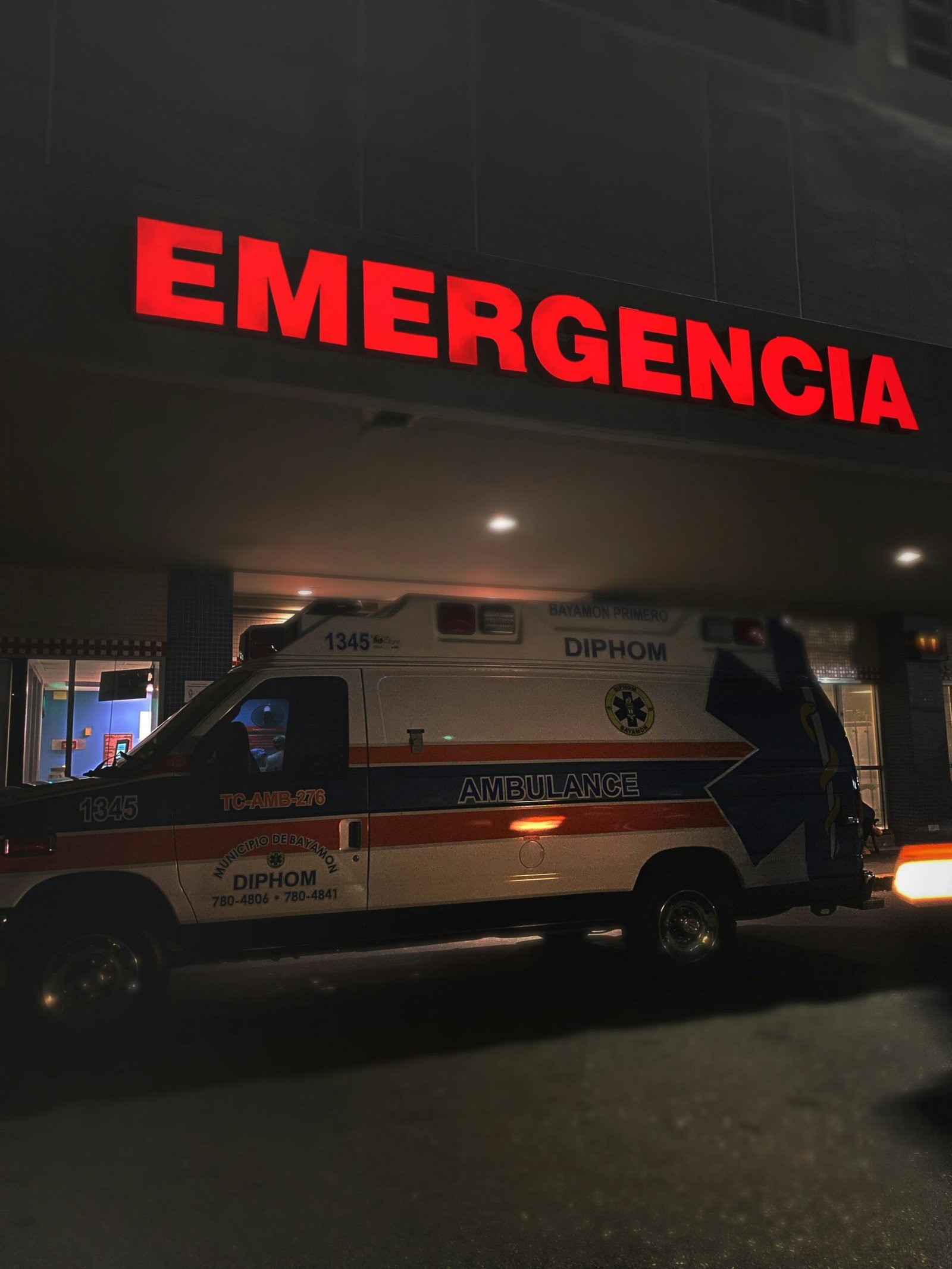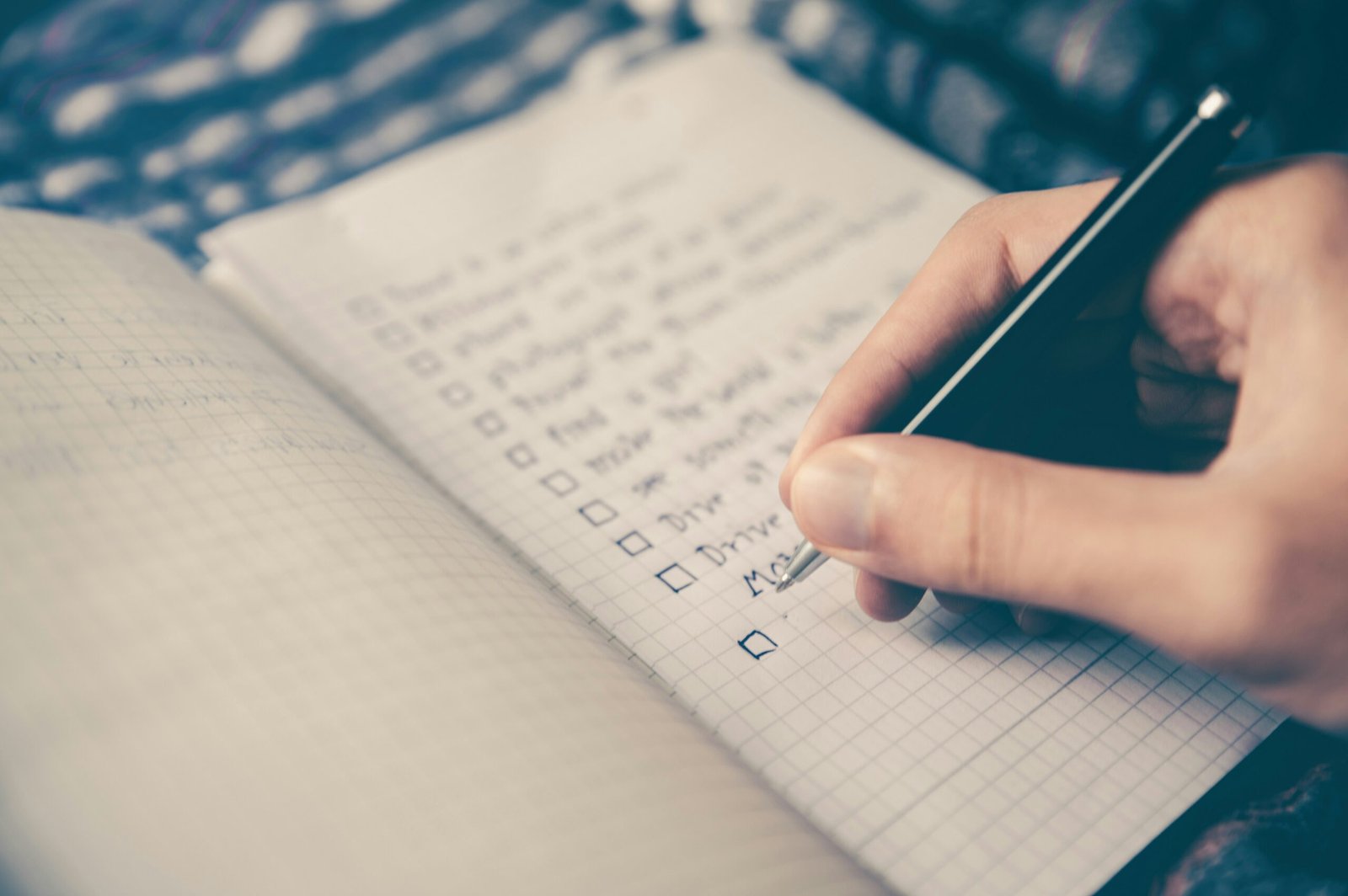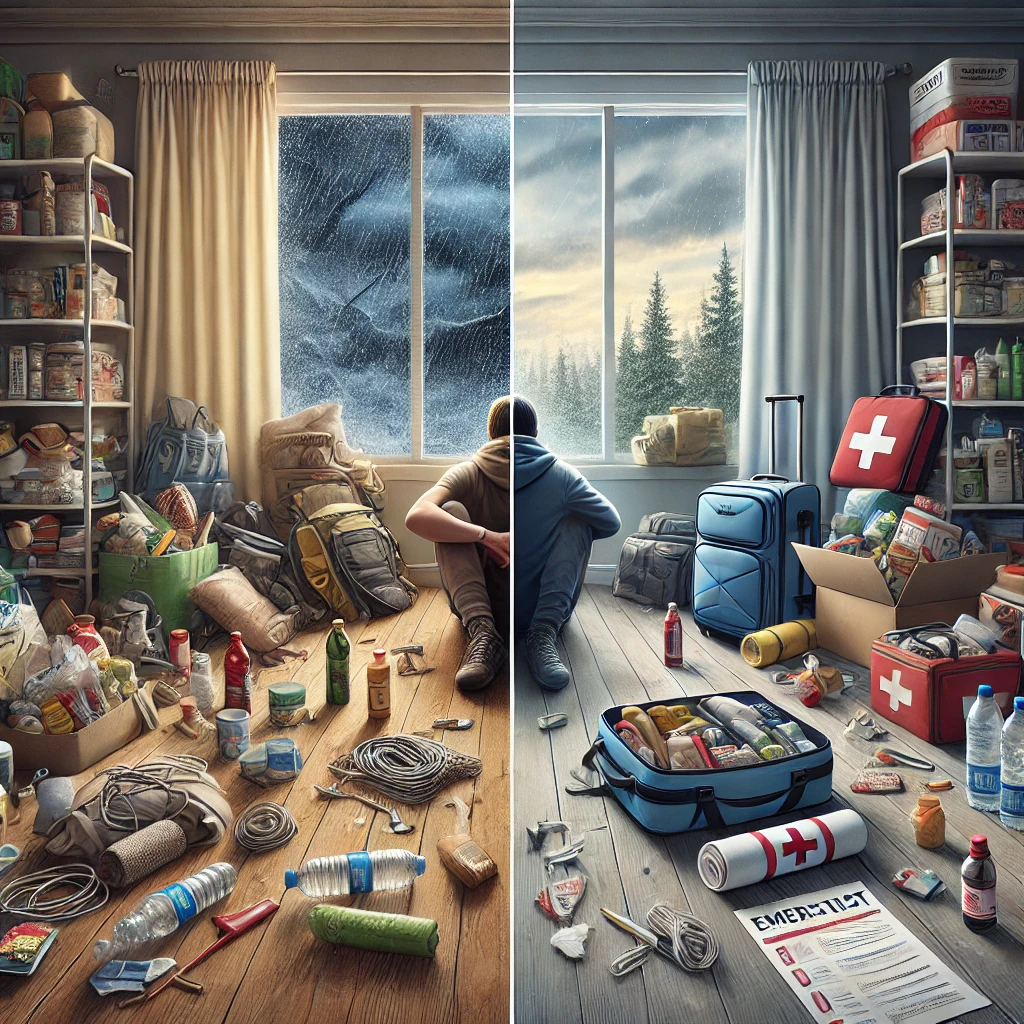
Introduction to Emergency Preparedness
Emergency preparedness is a crucial strategy that enables individuals and families to effectively respond to unforeseen events, such as natural disasters or other emergencies. With the increasing frequency of extreme weather conditions and unexpected crises, having a reliable emergency kit at home has never been more important. Such preparedness can significantly minimize risks and enhance safety during turbulent times.
Natural disasters, including hurricanes, floods, wildfires, and earthquakes, are becoming more prevalent, underscoring the need for effective readiness plans. Preparedness involves not only assembling essential supplies in an emergency kit but also developing a clear understanding of potential risks and how to respond accordingly. This planning can lead to a greater sense of security and reassurance, knowing that one is adequately prepared to face adverse situations that may arise.
In recent years, findings from disaster management studies indicate that well-prepared households experience fewer injuries and losses during emergencies. This highlights the significance of taking preemptive measures, which include reviewing and updating the contents of one’s emergency kit regularly. As we look forward to 2024, it becomes imperative to assess the components of your emergency kit to ensure that it remains relevant and effective. New products and advancements in technology can improve the function of emergency supplies, while personal needs may change over time. Regular evaluations not only ensure that your kit is well-stocked but also offer an opportunity to incorporate updated information about local hazards and recommended preparedness strategies.
In summary, understanding the importance of emergency preparedness and maintaining a reliable emergency kit can play an essential role in safeguarding oneself and loved ones against potential crises. Preparedness is a proactive approach that empowers individuals to take control of their safety in uncertain times.
Key Features of a Good Emergency Kit
When selecting an emergency kit for your home, it is crucial to consider several key features that ensure its effectiveness in times of crisis. Firstly, durability is paramount. An ideal emergency kit should be constructed from robust materials capable of withstanding various environmental conditions. This ensures that the contents remain intact and fully functional regardless of the scenario encountered, such as natural disasters or medical emergencies.
Portability is another essential aspect of a well-rounded emergency kit. In situations where you may need to evacuate quickly, a kit that is lightweight and easy to carry becomes invaluable. Opting for backpacks or compact containers that can be easily transported ensures that you can access your supplies wherever you may need them.
The variety of contents included in the emergency kit is also of utmost importance. A comprehensive kit should cover the essentials for different types of emergencies, including but not limited to food and water supplies, first aid items, communication devices like whistles or emergency radios, and personal hygiene products. Additionally, incorporating items specific to the needs of your household, such as baby formula or medications, further enhances the kit’s readiness.
Furthermore, compliance with emergency management standards is a critical feature for any effective emergency kit. This ensures that the kit meets recommended guidelines from recognized organizations, enhancing its reliability and efficacy. It is advisable to review the kit against local or national emergency preparedness checklists to confirm its suitability.
Finally, it is prudent to consider the types of emergencies that your kit should address, such as natural disasters, medical emergencies, or power outages. By preparing for a range of scenarios, your emergency kit will be a vital resource in ensuring safety and survival during unexpected events.
Recommended Emergency Kits for 2024
As we venture into 2024, choosing the right emergency kit for your household is more important than ever. Various factors, including contents, pricing, and user ratings, must be considered when selecting the best fit for your needs. Below, we review some of the top-rated emergency kits available this year, offering insights into their strengths and weaknesses.
One of the most comprehensive options is the Ready America 72-Hour Emergency Kit. Designed for a family of four, this kit includes essential items such as food, water, first aid supplies, and tools to survive for up to three days. Its affordability—priced around $100—makes it a popular choice among consumers, evidenced by its high user ratings. However, some users have noted that the food supplies may not accommodate specific dietary restrictions.
Another noteworthy contender is the Survivor Filter Emergency Survival Kit. Priced slightly higher at approximately $150, it emphasizes hydration, including a portable water filter designed to purify sources in emergencies. This feature is exceptionally beneficial in scenarios where clean water is scarce. User reviews highlight its practicality and compact design, though it may lack some of the food supplies found in other kits.
For those preferring a robust choice, the First Aid Only ANSI/Class B compliant Kit is an excellent option. This kit is ideal for larger families or households situated in remote areas. It contains extensive first aid items, additional food supplies, and shelter necessities, priced around $200. While this makes it a costlier option, its comprehensive nature provides peace of mind, especially during emergencies.
Lastly, the Earthquake Kit, specifically targeted towards seismic-prone regions, rounds out our recommendations. This kit comes equipped with unique tools and supplies tailored for earthquake safety, priced at approximately $120. While many users appreciate its specialization, some find it unsuitable for broader emergency preparedness.
In summary, selecting the best emergency kit for 2024 depends largely on your household’s unique needs and preferences. Each of these kits offers distinct advantages, ensuring you can find the right solution to protect your family during unforeseen events.
Essential Items to Include in Your DIY Emergency Kit
Creating a personalized emergency kit is an essential step towards ensuring your family’s safety in times of crisis. The process begins with a comprehensive checklist of vital items that cater to various categories such as health and medical supplies, food and water, tools and equipment, and personal documents. This method not only enhances preparedness but also tailors the kit to your unique family needs.
For health and medical supplies, it is crucial to include a well-stocked first aid kit, which should contain adhesive bandages, antiseptic wipes, gauze pads, and a variety of medications, including pain relievers and prescription drugs for family members. Additionally, items such as a thermometer and any necessary medical devices, like inhalers or EpiPens, should also be considered. It’s recommended to regularly check and replace expired items to maintain the kit’s efficacy.
When it comes to food and water, ensure your emergency kit includes at least a three-day supply of non-perishable food items such as canned goods, protein bars, and dried fruit. It’s also vital to have at least one gallon of water per person per day, with the total supply accounting for the number of family members and duration of potential emergencies. Don’t forget to include a manual can opener should you rely on canned goods.
In terms of tools and equipment, consider items like a flashlight with extra batteries, a multi-tool or Swiss Army knife, and a portable phone charger. A whistle may be useful for signaling for help without using too much energy. Sturdy gloves and duct tape can also be invaluable in unforeseen situations.
Lastly, don’t overlook personal documents. Collect vital papers such as identification, insurance policies, and medical records, and store them in a waterproof bag to preserve their integrity in emergencies. Tailoring your DIY emergency kit using this guide will ensure you are better prepared and can address the specific needs of your household.
How to Maintain Your Emergency Kit
Maintaining an emergency kit is essential to ensure that it remains effective when needed most. Regular inspections are a vital practice that helps identify any expired items or supplies that may need to be replenished. It is recommended to check your emergency kit at least once every six months, although more frequent checks may be warranted depending on the usage and conditions of the environment where it is stored. During these inspections, assess the functionality of all items, including flashlights, batteries, and first aid supplies, ensuring they are operational and accessible.
Updating items as needed is another critical aspect of kit maintenance. Over time, the needs of your household may change due to various factors such as the arrival of a new family member or the relocation to a different climate. Evaluate the contents of your emergency kit based on these changes and adjust accordingly. For example, consider adding appropriate medications or adjusting the types of clothing included based on seasonal requirements.
Rotating food and water supplies is essential to prevent spoilage. Non-perishable food items typically have a long shelf life, but it is still important to check their expiry dates during each inspection. To manage this efficiently, adopt a first-in, first-out (FIFO) approach when storing food. Additionally, ensure that your water supply is adequate and consider replacing it every six months to maintain freshness.
Re-evaluating the emergency kit after significant life changes is equally important. Dramatic events such as moving to a new area or experiencing a change in household dynamics warrant a comprehensive review of your emergency supplies. By scheduling regular maintenance checks and making necessary adjustments, you can ensure that your emergency kit remains fully equipped and ready to provide peace of mind in the face of unforeseen circumstances.
Emergency Kit for Special Needs
Creating an emergency kit that caters to individuals with special needs is paramount in ensuring their safety and comfort during unexpected situations. These specialized kits should consider the unique requirements of various groups, including children, the elderly, and individuals with medical conditions. Each group may have specific items that are critical for their well-being, and planning ahead can significantly alleviate stress during emergencies.
For children, including items such as favorite toys, comfort blankets, and essential medications can provide emotional support. It is essential to ensure that any medication is kept in its original packaging with clear instructions. Additionally, a first aid kit customized for children may include items like child-size bandages and antiseptics suitable for their age group.
In the case of the elderly, an emergency kit should encompass necessities such as prescription medications, extra eyeglasses, hearing aids, and any mobility devices needed. It is advisable to include easy-to-read instructions and emergency contact information. Additionally, personal items, such as photos or letters from loved ones, can also serve as comforting reminders during high-stress moments.
For those with medical conditions, the emergency kit should reflect their specific needs. This can include items like insulin for diabetics, nebulizers for asthma sufferers, or specific dietary needs for individuals with allergies. Furthermore, consider adding a list of medical conditions, current medications, and allergies to facilitate emergency medical care.
Accessibility is another critical factor when assembling an emergency kit for individuals with special needs. Ensure that the kit is easy to access and transport. Clearly label items inside the kit, and consider including items like grab bars, padded seating, and other aids that can make the environment more accommodating during emergencies. A well-prepared emergency kit can enhance safety, reduce anxiety, and ensure that individuals with special needs receive the attention and care they require in times of crisis.
Training and Practice for Using Your Emergency Kit
Preparation for emergencies extends beyond merely possessing an emergency kit; it necessitates systematic training and practice to ensure that all family members can effectively utilize the kit in times of crisis. Regular drills and exercises serve not only to familiarize individuals with the kit’s contents but also to reinforce essential action plans that can mitigate panic during actual emergencies.
One effective approach to training is conducting family drills that simulate various emergency scenarios, such as natural disasters or medical crises. These drills help families practice critical skills, such as communicating effectively and executing the action plans outlined for each type of emergency. During these drills, each member of the family can take turns leading the response, ensuring everyone understands their role and responsibilities. This not only builds confidence but also helps identify any areas where further training or revision of action plans is necessary.
Another important aspect of training involves thoroughly reviewing the contents of the emergency kit. Each family member should be familiar with the kit’s items—such as first aid supplies, food, water, and tools—and know how to use them. Engaging in discussions about the items in the kit can facilitate understanding of their purposes and how they can be utilized during specific emergencies. Families can also benefit from practicing the operation of emergency tools, such as flashlights or whistles, and reviewing the steps for accessing critical information, such as emergency contact numbers and local evacuation routes.
Through consistent practice and training, families can cultivate a heightened sense of readiness. This sense of preparedness leads to increased confidence when dealing with emergencies, ultimately resulting in better outcomes both for the individuals involved and the community at large. As we move forward, it’s essential to view these practices as ongoing commitments that encourage everyone to remain vigilant and engaged in their emergency planning efforts.
Building an Emergency Response Plan
Incorporating a comprehensive emergency response plan alongside your emergency kits is crucial for maximizing safety during unforeseen circumstances. An effective plan not only complements the preparedness provided by the kits but also ensures that all family members understand their roles and responsibilities when faced with an emergency situation.
Firstly, establishing a communication plan is paramount. This involves designating a primary and secondary point of contact outside your immediate household. In the event of a disaster, such as natural calamities or other emergencies that may disrupt local communication systems, having an alternative contact can provide reassurance and status updates. This plan should include important phone numbers, email addresses, and any relevant social media channels that can serve as avenues for communication.
Next, identifying a specific meeting point is vital for family cohesion. This designated safe location should be easily accessible and familiar to all members, ensuring that, in the chaos of a crisis, everyone knows where to regroup. Select a central spot outside your home, as well as an alternative location in case leaving the vicinity becomes necessary.
Establishing family roles during an emergency is a critical element for efficiency and effectiveness. Designate responsibilities based on each member’s capabilities; for instance, one might be in charge of the emergency kit, while another might focus on ensuring pets are safe. By clarifying these roles ahead of time, family members can act swiftly, reducing panic and confusion. Conduct regular practice drills to ensure everyone is familiar with the plan and their designated tasks.
Finally, remember to regularly review and update your emergency response plan. Family dynamics may change over time, and the plan should adapt accordingly. This proactive approach is essential for fostering resilience within your household in the face of an emergency.
Conclusion: Empowering Your Family for the Unexpected
As we navigate the uncertainties of daily life, the importance of being prepared for emergencies cannot be overstated. The right emergency kit serves not merely as a collection of supplies, but as a fundamental pillar of your family’s safety. In 2024, investing in a top-quality emergency kit is a proactive measure that can significantly enhance your preparedness for any unforeseen events ranging from natural disasters to personal emergencies. A comprehensive kit includes essential items such as water, food, first aid supplies, and communication devices, tailored to address a variety of potential scenarios.
Maintaining your emergency kit is equally crucial. Regularly checking expiration dates on food and medication, replacing batteries in flashlights or radios, and updating personal information cards ensures that your kit remains functional when it is needed most. Establishing a routine for this maintenance can be a simple yet effective way to instill preparedness as a priority in your household. Consider involving family members in this process; doing so not only reinforces the importance of being ready but also fosters a collective sense of responsibility and empowerment.
Ultimately, the goal is to cultivate an informed family that meets the unexpected with confidence. Whether it is through education about local risks, understanding emergency protocols, or having access to a well-stocked emergency kit, every step taken now prepares your family for uncertain futures. Community resources such as workshops or training sessions can further equip families with the skills needed in crisis situations. By embracing a proactive approach to emergency preparedness, you empower your loved ones, ensuring they are not overwhelmed by the unexpected but rather equipped to handle it decisively.


